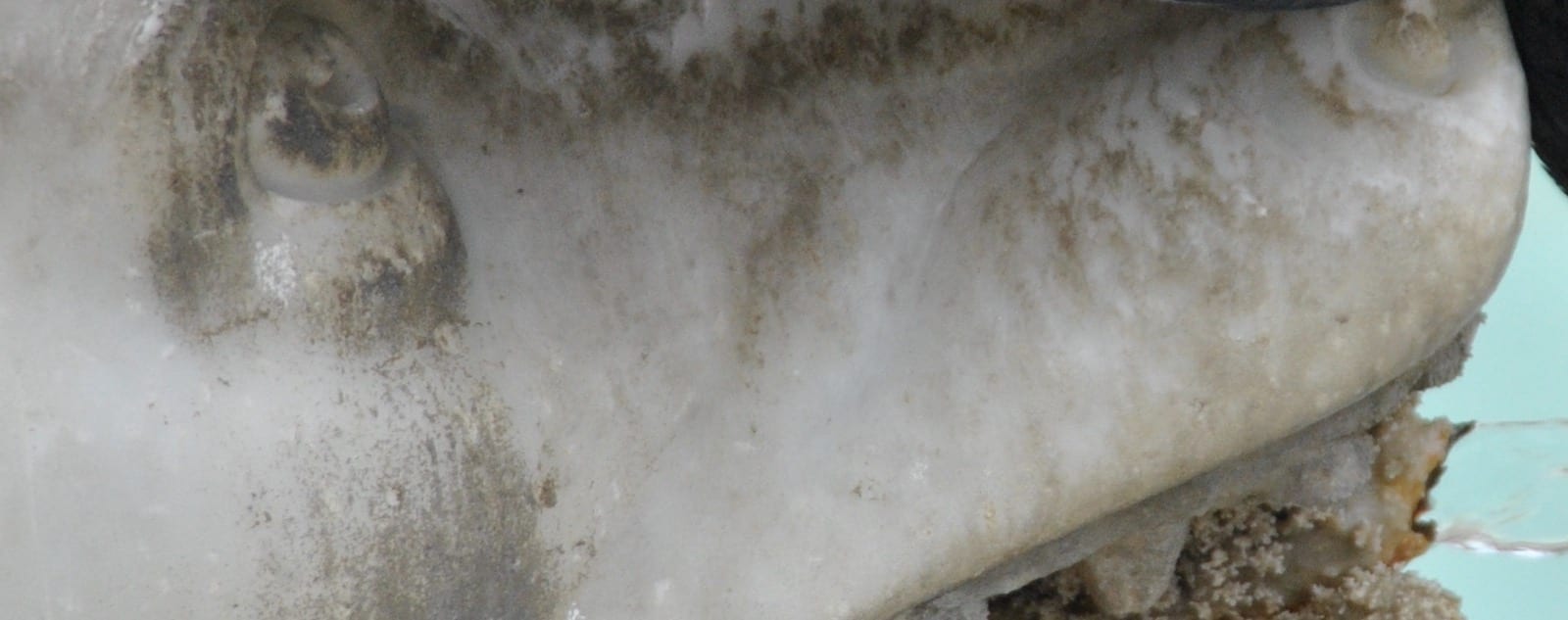Essay, first published in Trauma and Encounter, Yearbook of the DGfS, Göttingen, Vandenhoeck & Ruprecht, 2017. – Part 1 –
Preface In what follows, I explore the connections between trauma, illusion and spirituality. I approach these three phenomena as they appear to me in constellation work. My contribution takes the form of a psychological reflection.
At the outset I would like to make a distinction: trauma is not the event itself, such as an accident, psychological or physical assault, act of violence, war or natural disaster. Trauma is a complex internal survival mechanism that enables us to survive such an event and go on living. The event itself does not belong to our present but to the past.
The past has the characteristic of being over and not returning. Trauma, on the other hand, is a physical and emotional activity by which we keep alive a past that we have experienced as devastating, in order to protect ourselves from similar threats in the future. Trauma projects the ‘past’ and the ‘future’ into our present as internal images so that we are better prepared. It feeds on our survival instinct.
Trauma may be the central phenomenon that has shaped us into human beings, both physically and emotionally, over millions of years. If there is a driving force behind our psyche that compels it to constantly produce images, connect them to physical sensations, emotions and thoughts, and search for correspondences in the present moment, then that force is trauma.
Where there is trauma, there are resources. Where there is danger, there also grows what saves,’ wrote Friedrich Hölderlin (1993, p. 186) in his 1803 hymn ‘Patmos’. ‘What saves,’ i.e. the resources, have indeed grown within us during the trauma, because we ourselves are still alive. To tap into them, we need to understand that we have survived and that the danger of the past has passed. Our scars are evidence of this. This understanding concerns the whole body, i.e. the somatic, emotional and mental aspects. The soul, on the other hand, already knows this because it comes from the trauma (Giegerich, 1992).
Trauma’, physical and emotional What is trauma really (it is not ‘real’, more on this below)? Trauma is a specifically human activity. With the help of an inner landscape of images, it perpetuates a threat that was subjectively experienced as overwhelming and incapacitating. Present situations that feel similar trigger the survival mechanism that was successful in the past. They ‘trigger’ us.
Our body keeps the image of the threat alive in order to improve its chances of survival, using all its abilities. This includes the memory of our flesh, organs, limbs and cells, as Peter A. Levine (2012) has found in our basic mammalian equipment. It also includes emotional memory, i.e. the emotional image (emotions are a bodily function), and rational abstraction, i.e. the mental image (thinking is also a bodily function). All three are permanently connected and resonate with each other.
Trauma is something physical. It affects the body, takes place in the body and is based on the capabilities of our body. The means of expression of trauma, i.e. its symptoms, affect, permeate and shape the whole of human life in all its diversity, from the way we deal with ourselves and our relationships to larger collective phenomena such as economic, political and cultural developments. From this perspective, war and peace appear as collective symptoms of trauma and trauma resolution.
When an experience that is subjectively classified as devastating overwhelms our body, for example because it is too fast, too intense or too painful, it activates an emergency programme. This programme is stored in the ‘reptilian brain’ (Levine, 2012), the earliest and most evolutionarily primitive part of our central nervous system (CNS). It is faster than our thinking and feeling, it is consistent, and it cannot be consciously controlled. In moments of overwhelm, when neither fight nor flight is subjectively possible and we feel helpless and unable to act, the body uses this powerlessness and associated panic for its oldest survival programme: unconsciousness or paralysis. It takes everything that has to do with the overwhelming, seemingly unbearable situation and lets it collapse in on itself. What and how much it takes depends on the energy of the event and the subjective state of dependency and consciousness of the individual.
Often physical sensations, feelings and thoughts fall into the collapse, so to speak: the immediate sensory perceptions, the emotions associated with the event (feeling as ‘resonating at a distance’) and thinking as a rational-abstract development of feeling (the ‘resonating in the rational model’). This also applies to the construction of the past that we call memory. Some events seem to be completely erased from our memory, as if they had never happened. But they do not disappear. Nothing is lost to the unconscious memory of the body. Trauma protects our conscious perception from them so that we can go on living.
However, trauma is not only in and through our bodies. It has a reflection in our soul. Interestingly, it is my work with human bodies that leads me to see the soul and the body as mirrors of each other, without separating the two. The ‘soul’ is the ‘inside of life’ (Nelles, 2016), a kind of reflection of everything we are and everything we are in (Giegerich, 2010). Wolfgang Giegerich thinks of the soul in a strictly psychological sense, as a kind of logical negative of our perceptible existence. It ‘is’ everything about us that is not there, so that we cannot directly perceive it, know it precisely, or grasp it directly in language. It contains and reflects our individual and collective life (Giegerich, 1992, 2010). Without this capacity, without the resulting awareness of ‘I am’, there is no trauma.
Natural animals in the wild release the survival energy trapped in powerless rigidity by beginning to shake, jump, etc. for some time afterwards (Levine, 2012). Animals can feel. They have emotions such as fear and pleasure, joy and anger. Animals can remember, and many species can even act purposefully. It is uncertain to what extent they have self-awareness in the sense of perceiving an ‘I am’, i.e. a consciously perceived inner mirror. Only such a self-awareness would be capable of capturing the overcoming threat in inner images, preferring these inner images to the now safe reality and thus creating ‘trauma’. Wild animals seem to do exactly the opposite: once the immediate threat is over, their bodies relax on their own. After that, they go on living as before.
Trauma, on the other hand, requires consciousness in the way just described. Humans have such consciousness. In fact, we are consciousness that has begun to come into its own. Trauma is both: a product of human consciousness and the motor of its movement towards itself. In this sense it represents the evolutionary survival advantage of being human.
In its early stages, dependent on the environment, our consciousness cannot see that we have survived the threat (Nelles and Geßner, 2014). It therefore keeps it in the body as a precaution, and therefore also in the psyche and in thought. The soul, on the other hand, knows this very well. When an experience that we subjectively classify as devastating overwhelms us because it is too fast, too big or too painful, the soul is confronted with what it has created or built up over millions of years of communal hunting and ritual killing: with killing, with the resulting distance from oneself, with the shuddering awareness of mortal danger, with the resulting sense of ‘I am’. Wolfgang Giegerich’s (1992) remarks on this may sound strange at first. But they help me to understand trauma more deeply.
Unlike the body, the soul does not avert its gaze from what is too much in the moment. It does not forget a single detail of the overwhelming event. Therefore, after the threat has passed, the soul (unlike the body) seems to know that we are still here, now safe and secure. The soul knows no time. For it all that was is always there. The soul seems to want the event that triggered the trauma to be allowed to belong as it actually was. In this sense it wants to become complete and whole. The soul seems to be relentlessly pushing us to look, feel and sense so that it can become whole and contain that experience, including the fact that it survived.
In my opinion, the soul pushes for healing in order to become whole, and the longer ago the traumatic event was, the more it pushes. It does this by using our body’s ability to form symptoms in somatic and psychological manifestations. It does not spare the members of subsequent generations. It also pursues the urge for wholeness in its symptom formation. The soul keeps leading us into situations similar to the event in question until we realise that the threat has passed. Our symptoms are signs of the beginning of healing. Whether it will succeed is always an open question.
Read more: Go to the second part here …
References can be found at the end of the third part.





0 Comments